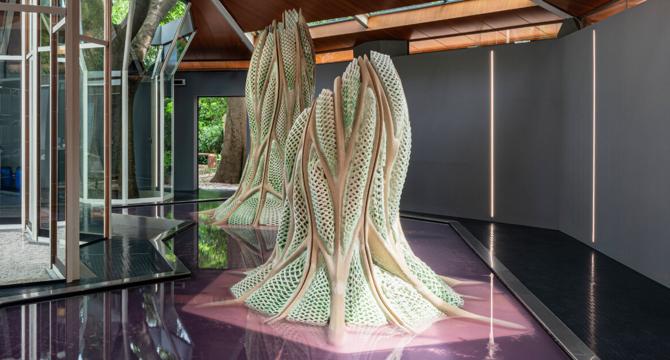Designboom
3d
315

Image Credit: Designboom
3D printed biostructures with live bacteria capture carbon dioxide from air at venice biennale
- Living Room Collective uses live cyanobacteria in 3D printed biostructures at the Venice Architecture Biennale 2025 to capture carbon dioxide from the air.
- Named Picoplanktonics, the project combines ancient metabolic processes of photosynthesis and biocementation.
- Cyanobacteria within the structures capture carbon dioxide, turning it into solid minerals that act as 'cement' to store carbon permanently.
- The structures are fabricated at ETH Zürich's laboratory and feature living cyanobacteria infused during the printing stage.
- Special conditions like warm sunlight, high humidity, and access to salt water in Venice help the bacteria thrive and harden the prints.
- The bacteria within the structures can repair themselves to a healthy state, contributing to the regenerative design concept.
- Visitors to the exhibition can witness the process and progress of Picoplanktonics at the Canada Pavilion from May 10th to November 26th, 2025.
- The project involves a research team and collaborators from different institutions, focusing on sustainable and regenerative design.
- Various individuals and organizations have contributed to the production and development of Picoplanktonics, emphasizing interdisciplinary collaboration.
- The exhibition showcases the potential of biological material systems in architecture and environmental sustainability.
Read Full Article
18 Likes
For uninterrupted reading, download the app